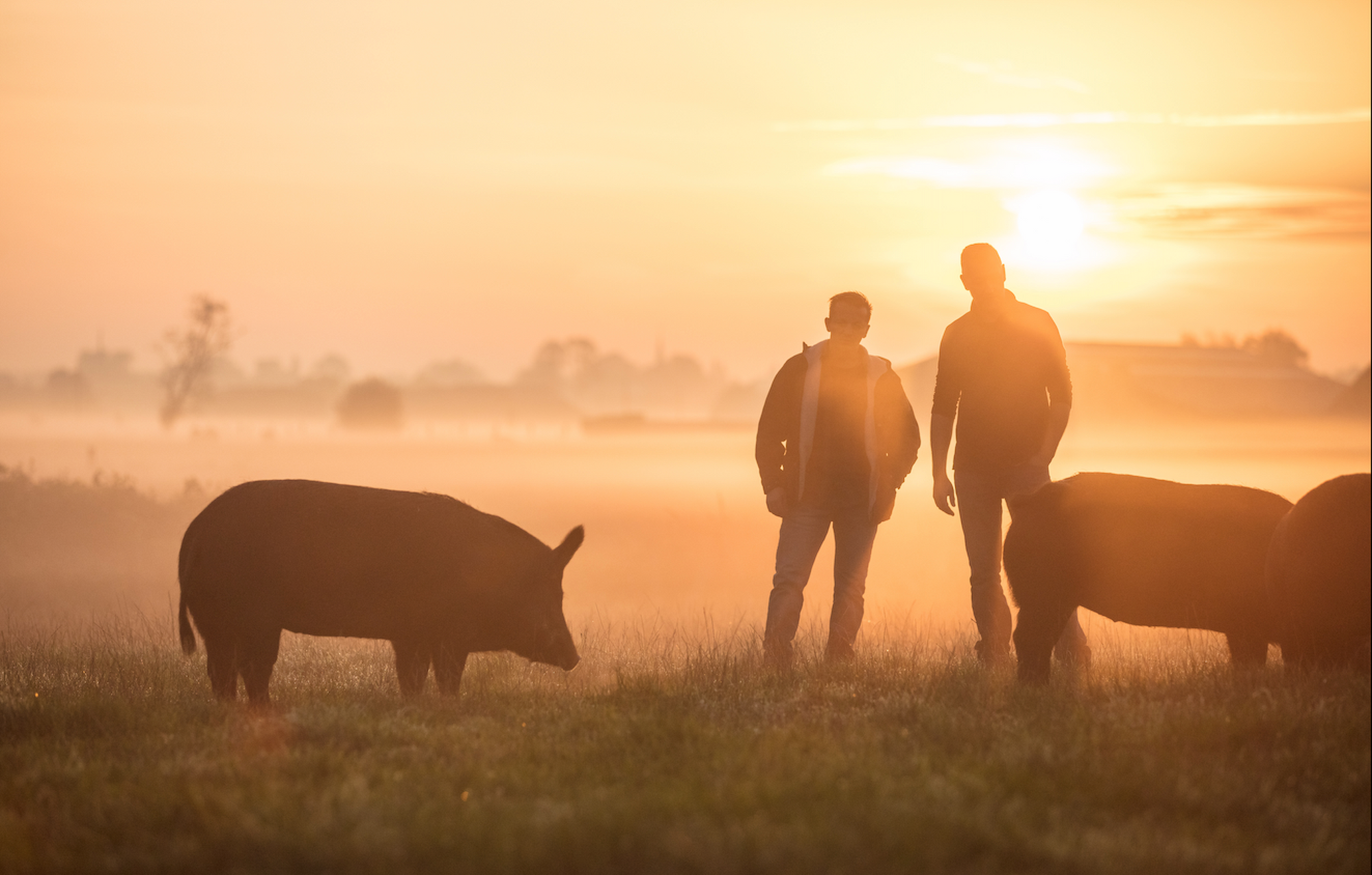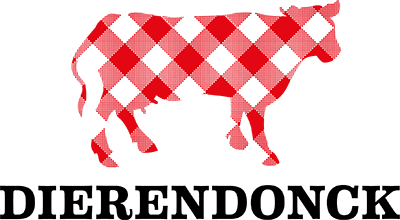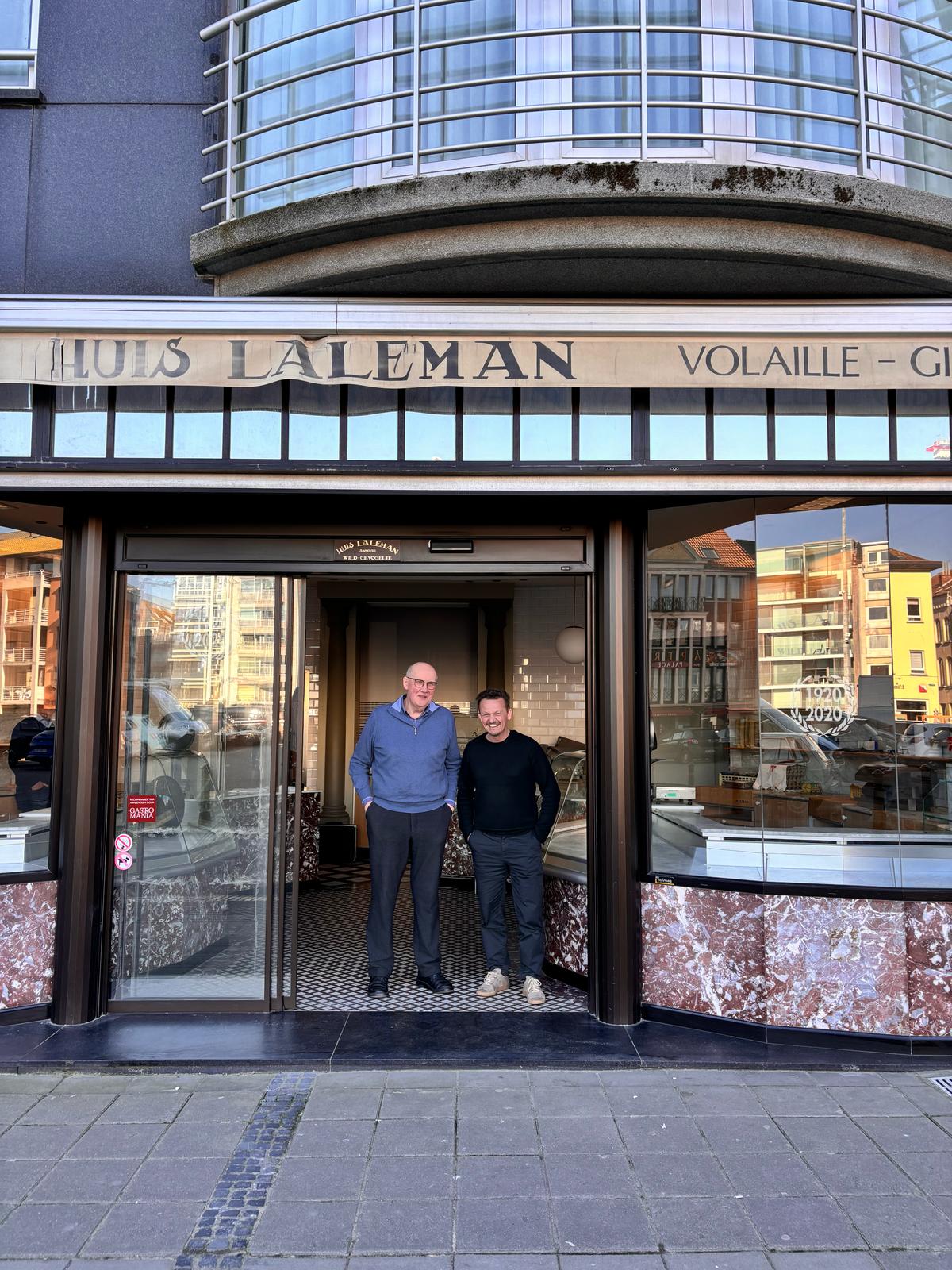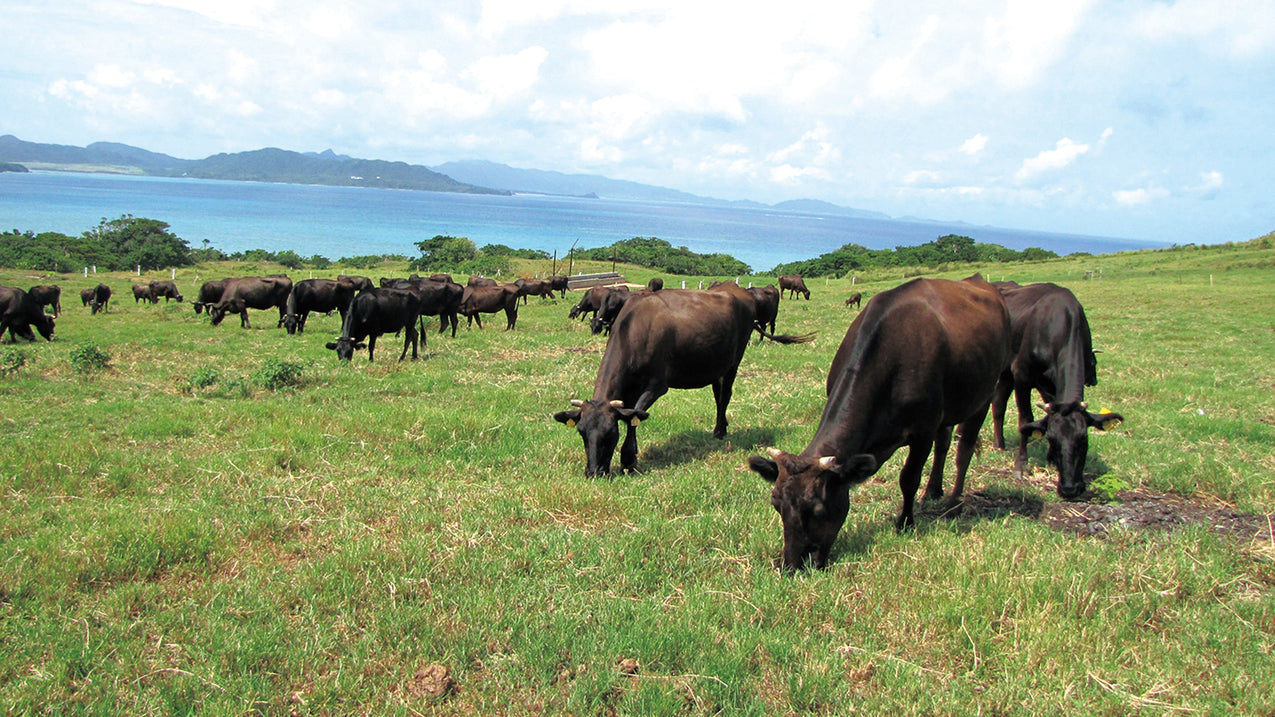The Menapian Pig

“When you love what you do 100 percent and are very passionate and proud of your profession, then you’re always on the lookout for something different, something better, something innovative. It may seem strange that you have to look to the very distant past for this, as a butcher or a breeder, and yet that is the reality. You need to take a step back, reset, to rebuild something.
The Flemish primal pig
That was the idea behind our adventure with the Menapian pig. A quest to find the Flemish primeval pig. This journey started two years ago, with the help of the pig breeder Ruben Brabant, one of those amazing chance encounters in life. We both happened to be looking for the same elusive thing, which is why we decided to join forces.
A shared acquaintance then pointed us in the direction of Ghent University, where Professor Benedikt Sas and archaeologist Wim De Clercq were interested in what we had to say. They helped the last piece of the puzzle to finally fall into place. Wim had recently excavated the bones of a pig that roamed our land 2,000 years ago near the coast. Usually, bones are never preserved for that long in acidic soil but this was an exception, because of the naturally occurring lime and historic use of loam as a building material. It’s always nice when you have a break.
Further research revealed that these were the bones of a halfwild, half-domesticated pig, which they found in the forest and which was prized during the Roman Empire for its meat. Many old texts literally refer to the Menapian pig. Ruben and I had finally found our Holy Grail. The name is derived from the Menapians, a peasant tribe that lived around 50 BC in northern Gaul, in the region that is known today as West Flanders, East Flanders and Zeeland Flanders.
The tribe’s speciality? Breeding pigs, of course. In those days, they used to brine and dry meat to preserve it, meaning it could be kept for long periods of time. And the Romans loved it. They even supplied it to their legions on their long and arduous tours of duty. Flanders’ oldest official export product, in other words.
Now all we had to do was bring this almost mythical Menapian pig back to life. Easier said than done. To all intents and purposes, the process was not in any way like the method used in Steven Spielberg’s blockbuster Jurassic Park from the early 1990s. We could only extract DNA from the bones for a comparative study. Currently, we are almost there.
But first Ruben had to identify the best possible cross-breeds from which to breed a Menapian pig, or something that resembled it very closely. Without wishing to reveal all his secrets, I can disclose that this process involved a real boar and a few ancient pig breeds. The first Menapian pigs have been running around for about a year now in Ruben’s stable in Nevel. One of the most noticeable things about them is their dark, woolly coat. They also have a crest on their back, which they can raise to look more imposing. Although they’re slightly smaller than ordinary pigs, they make up for the difference in size with their temperament. A moment of inattention, and they will have ripped your skin with their impressive tusks.
They are wild animals, after all. And ‘survival of the fittest’ is a way of life for them. The weakest piglets are sometimes eaten, without mercy, by their mothers. They are also very curious and have a strong herd instinct. If one is stubborn, the others will follow suit. Our Menapian pigs spend almost all their time – 12 to 14 months depending on our plans for them – outside, are very resilient and are not given antibiotics. Pigs used for charcuterie spend more time outside because that’s the only way to obtain excellent lardo-like back bacon and big hams with plenty of fat. The first animals we slaughtered revealed that the meat is not as pale as that of an average pig. It is pinkish to dark red, with a very fine texture. Like boar, it also has a very fine grain. And because of cross-breeding, there is some marbling.
The best of both worlds, in fact. The meat is also very dense, not too tender. I have pork that has been ageing for three weeks here. You would never have been able to do this in the past. Cutlets of Menapian pigs can last for up to ten days, enhancing and adding power to the flavour. Really magnificent. And you can taste a certain wildness in the fat. Exactly what Ruben and I had in mind. All we have to do now is fine-tune their food. Some employees of Ghent University are currently re-examining old texts to find out what these creatures would have been fed in the past, which wild herbs they would have foraged for, and so on. We have already come so far, much further than we ever dared hope, but I’m sure the Menapian pig has plenty of other developments in store for us. But with this book we are already lifting the veil…”





Waar kun je het vlees van dit ras kopen?
Ben zeer nieuwsgierig